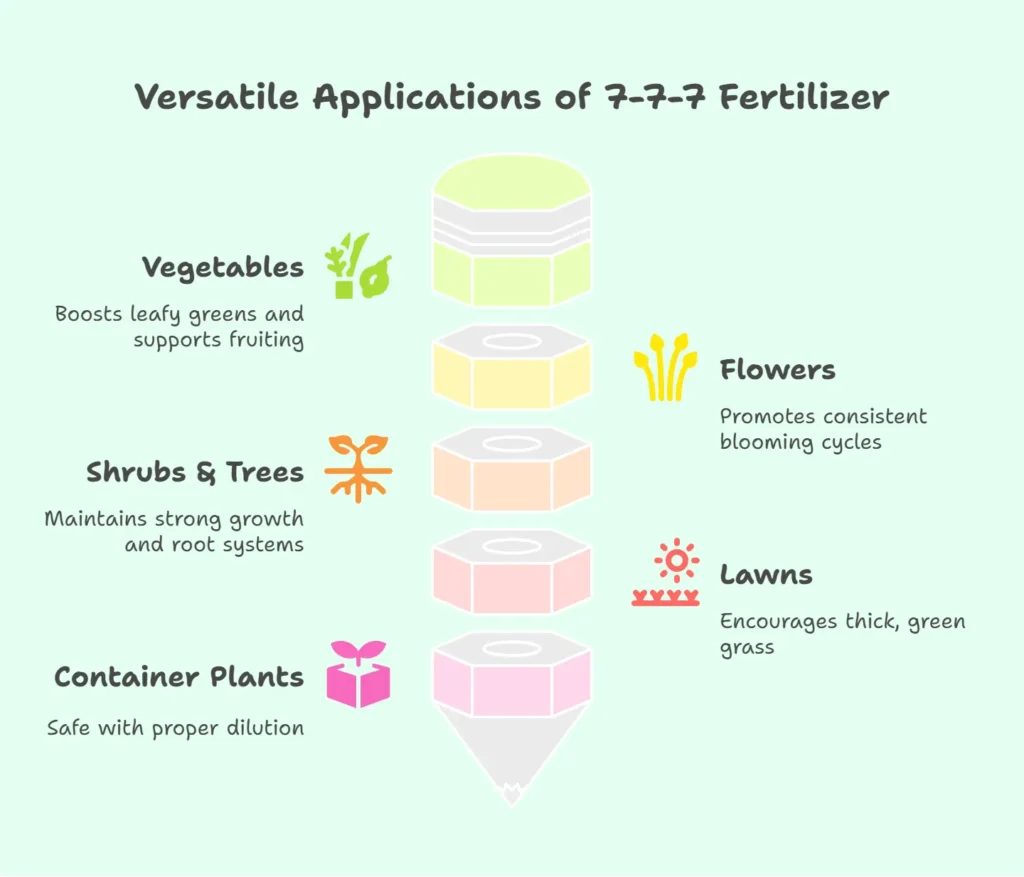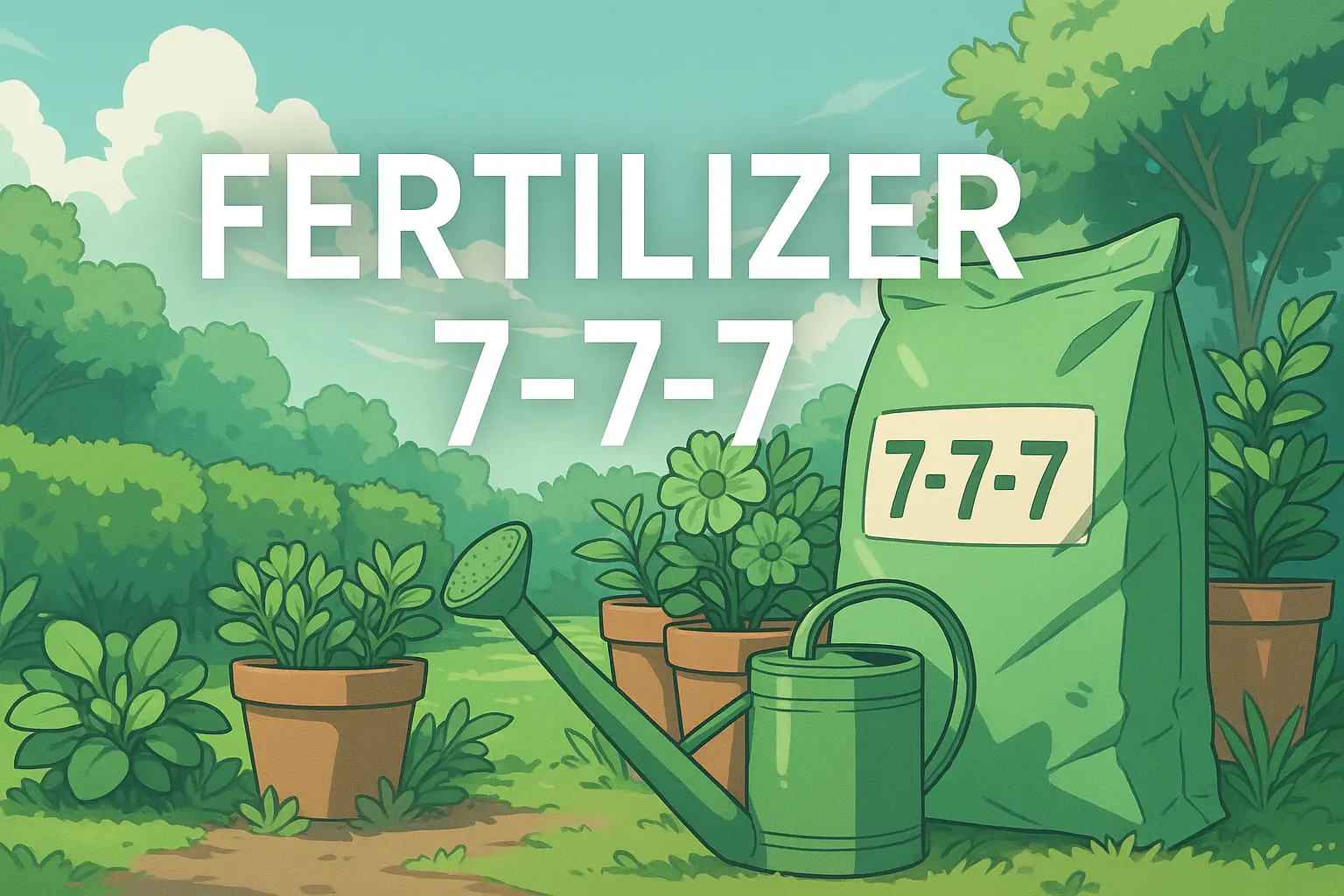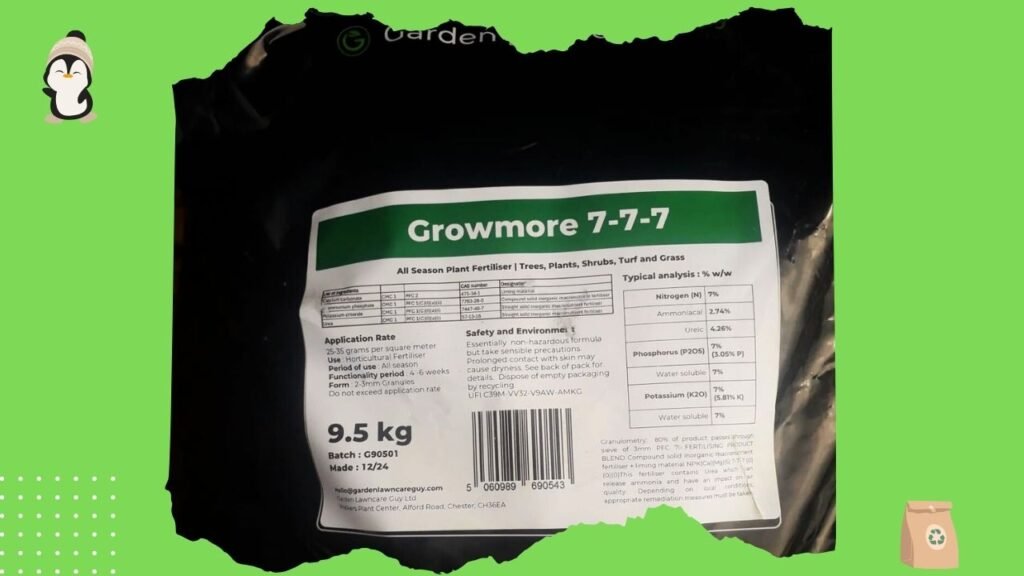7-7-7 fertilizer: What It Is & How to Use It Right
Ever wondered what makes 7-7-7 fertilizer so popular? Whether you’re new to gardening or looking to simplify your routine, this balanced blend has probably caught your attention.
7-7-7 Fertilizer contains equal parts of nitrogen, phosphorus, and the three main nutrients that plants need to grow strong and healthy. Known for its versatility, it works well across various plant types and soil conditions.
In this guide, we’ll break down what it is, how to use it, and when to choose it over other options. If you’re after a beginner-friendly, garden-boosting solution, read the whole blog.
What Is 7-7-7 Fertilizer?
The numbers 7-7-7 represent the NPK ratio: 7% Nitrogen (N), 7% Phosphorus (P), and 7% Potassium (K). Each nutrient supports a different function:
| Nutrient | Role in Plant Growth |
| Nitrogen (N) | Promotes leafy growth |
| Phosphorus (P) | Supports root and flower development |
| Potassium (K) | Aids in overall plant health and resistance |
Because each element is provided in equal amounts, 7-7-7 is considered a balanced NPK fertilizer, often referred to as a triple 7 fertilizer. It suits a wide range of garden needs without overwhelming the soil.
Best Uses for 7-7-7 Fertilizer
This all-purpose blend is perfect for:
- Vegetables: Boosts leafy greens and supports healthy fruiting.
- Flowers: Promotes consistent blooming cycles.
- Shrubs & Trees: Maintains strong growth and root systems.
- Lawns: Encourages thick, green grass.
- Container Plants: Safe with proper dilution.
It’s a universal garden fertilizer and a great option if you want one product for multiple uses.
Can You Use 7-7-7 Fertilizer on Fruit Trees or Lawns?
Yes, but timing matters:
- Fruit Trees: Use during early growth or the pre-flowering stage to support root and leaf development.
- Lawns: Apply during the growing season (spring or early fall) for a lush look.
Looking for alternatives to 7-7-7 for fruit trees? Try 10-10-10 for balanced feeding, or 5-10-10 to boost fruiting. Organic picks like Espoma Citrus-Tone or Dr. Earth Fruit Tree Fertilizer support long-term health. Fish emulsion is great for young trees, while compost and manure improve soil naturally.
You should always follow application guidelines and adjust based on plant type.

How to Apply 7-7-7 Fertilizer Correctly
When I first started using 7-7-7 fertilizer, I was a little nervous about how much and how often to apply it. But with a little trial and error, I found a rhythm that worked, and my plants definitely noticed the difference!
Application Forms I’ve Used
| Type | Best For | What I Like About It |
| Granular | Lawns, flower beds, trees | Easy to sprinkle and lasts a while |
| Liquid | Potted plants, veggies, quick fixes | Fast-acting and easy to dilute |
| Slow-Release | Busy schedules, long-term feeding | Set it and forget it-feeds for weeks |
Each type has its place in the garden. I use granular for my raised beds, liquid for houseplants, and slow-release when I know I won’t have time for regular feedings. You can also check this expert guide on 7-7-7 Fertilizer.
How Often I Apply Fertilizer 7-7-7
A good rule of thumb I follow:
- Outdoor plants: Every 4 to 6 weeks during their growing season.
- Indoor plants or sensitive varieties: Once a month, diluted to half strength.
This keeps things simple but consistent, no overfeeding, no nutrient burn.
Safety Tips from Experience
I’ve learned that even a great fertilizer needs to be used with care. Here’s what I always keep in mind:
- Always water after applying – It helps the nutrients soak in and prevents root damage.
- Never apply to dry or wilting plants – Feed after watering, not before.
- Store it safely – I keep my bag or bottle in a cool, dry spot, far from curious pets or kids.
Fertilizer 7-7-7 vs Other NPK Fertilizers
Here’s a quick comparison:
| Fertilizer | NPK Ratio | Best For |
| 7-7-7 | Balanced | General-purpose, all plant types |
| 10-10-10 | Stronger | Established plants needing a boost |
| 20-20-20 | High Strength | Rapid growth, heavy feeders |
| Organic Mixes | Varies | Sustainable, soil health focus |
When to Choose Fertilizer 7-7-7
- You’re unsure of your soil needs
- You’re growing a mix of plants
- You want an easy-to-use, safe fertilizer
Organic Options That Mimic 7-7-7 Fertilizer
When I started leaning into more natural gardening, I wondered if there was an organic way to match the balanced power of a 7-7-7 fertilizer. The good news? There is and it works beautifully.
One of my favorite mixes includes:
- Compost – for overall soil health and organic matter
- Bone meal – a natural source of phosphorus for root growth
- Wood ash – adds potassium and raises soil pH slightly
Together, these ingredients come surprisingly close to that ideal balanced NPK ratio. I like to call it the DIY version of 7-7-7 fertilizer great for garden beds, veggies, and even fruit trees.
You can also find organic granular blends at garden centers labeled as “all-purpose” or “balanced.” These typically offer a nutrient ratio close to 5-5-5 or 6-6-6, which works just as well for general plant feeding.
If you’re eco-conscious like me, this is a great way to boost your plants without synthetic inputs. Plus, natural fertilizers improve soil over time, not just plant growth.
FAQs
Is 7-7-7 fertilizer good for all plants?
✅ Yes! I’ve found it’s a safe, balanced choice for most plants, perfect when you’re not sure what nutrients your garden needs.
How often should I use 7-7-7 fertilizer?
📅 Every 4-6 weeks during the growing season works well. It gives steady support without overfeeding.
Can I use 7-7-7 on indoor plants?
🌿 Definitely, but I always dilute it to half strength. Indoor plants are more delicate, and a lighter dose keeps them healthy and happy.
Conclusion
7-7-7 Fertilizer is a simple yet powerful tool for supporting healthy, vibrant plants. It offers a balanced blend of nutrients, making it ideal for beginners and experienced gardeners alike.
Whether you’re growing vegetables, flowers, trees, or just want a greener lawn, this easy fertilizer for beginners gives your garden a boost without the guesswork.







